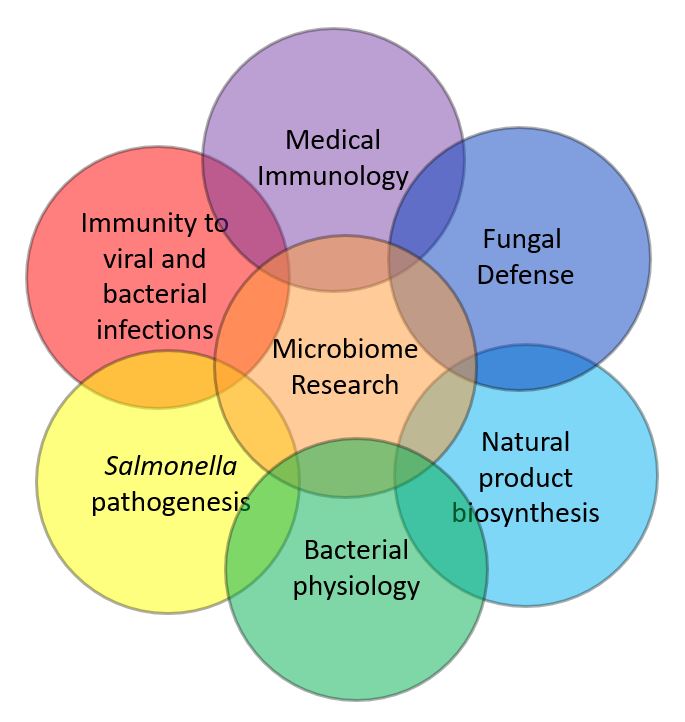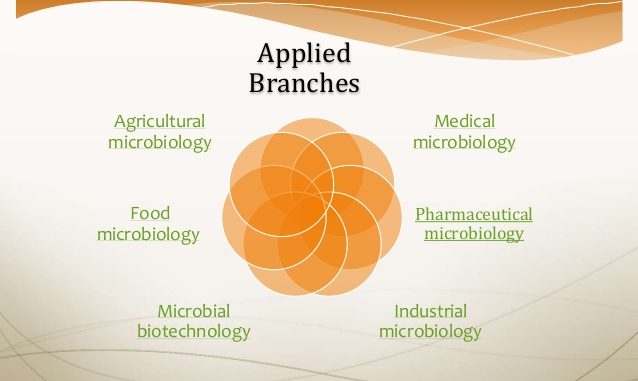Microbiology is the study of microscopic organisms, including bacteria, viruses, fungi, protozoa, and algae. It is a vast and diverse field, critical to understanding various aspects of health, disease, and the environment. The discipline of microbiology is divided into several branches, each focusing on different types of microorganisms or aspects of their biology and impact. Here are the six main branches of microbiology, with detailed insights into each.
Bacteriology

Bacteriology is the branch of microbiology that deals with the study of bacteria, unicellular organisms that can be found in virtually every environment on Earth. This field explores the morphology, genetics, ecology, and biochemistry of bacteria, as well as their role in disease and health.
Bacteriologists work on identifying bacterial species, understanding bacterial infections, and developing antibiotics and vaccines. They also study the beneficial roles of bacteria in processes like nitrogen fixation and fermentation.
Key Areas
This subfield focuses on bacteria that cause diseases in humans, animals, and plants. Researchers study bacterial pathogenesis, mechanisms of infection, and host immune responses to develop effective treatments and preventive measures.
This area studies bacteria in natural environments such as soil, water, and air. Environmental bacteriologists investigate bacterial roles in nutrient cycling, biodegradation, and their impact on ecosystems.
This subfield examines the use of bacteria in industrial processes. Bacteria are used in the production of food products (like yogurt and cheese), biofuels, pharmaceuticals, and in bioremediation to clean up contaminated environments.
Techniques and Tools
Various types of microscopy, including light, electron, and fluorescence microscopy, are used to observe bacterial morphology and structures.
Growing bacteria in controlled conditions using different types of media to isolate and identify bacterial species.
Polymerase chain reaction (PCR), sequencing, and genomic analysis are used to study bacterial genetics and functions.
Virology
Virology is the study of viruses and virus-like agents, focusing on their structure, classification, and evolution, as well as their methods of infection and replication.
Virologists investigate the interactions between viruses and host cells, aiming to understand viral diseases and develop antiviral drugs and vaccines.
Key Areas
Medical Virology focuses on viruses that cause diseases in humans. Researchers study virus transmission, pathogenesis, and the development of vaccines and antiviral therapies. Major human viruses studied include influenza, HIV, hepatitis viruses, and coronaviruses.
Plant virologists study viruses that infect plants, leading to agricultural losses. They research virus transmission by vectors (such as insects), plant-virus interactions, and strategies for developing virus-resistant crops.
Animal Virology studies viruses that infect animals, both domesticated and wild. Researchers work on controlling viral diseases in livestock and pets and study zoonotic viruses that can be transmitted from animals to humans.
Techniques and Tools:
- Electron Microscopy: Used to visualize the ultrastructure of viruses.
- Cell Culture: Growing viruses in cell lines to study their life cycles and effects on host cells.
- Molecular Techniques: Techniques such as reverse transcription PCR (RT-PCR) and next-generation sequencing for detecting and analyzing viral genomes.
Mycology
Mycology is the branch of microbiology that focuses on fungi, a diverse group of organisms that includes yeasts, molds, and mushrooms. Mycologists study the genetic and biochemical properties of fungi, their taxonomy, and their use in medicine and industry. Fungi are important for their roles in decomposition, nutrient cycling, and symbiotic relationships with plants.
Key Areas
Medical Mycology studies fungi that cause diseases in humans and animals, such as Candida, Aspergillus, and Cryptococcus species. Researchers work on understanding fungal pathogenesis and developing antifungal treatments.
Agricultural Mycology focuses on fungi that affect crops and plants, including those that cause plant diseases and those that form beneficial symbiotic relationships, such as mycorrhizae.
Industrial Mycology explores the use of fungi in industrial applications, including the production of antibiotics (e.g., penicillin), alcohol, organic acids, and enzymes used in food and beverage production.
Techniques and Tools
- Culture Methods: Growing fungi on various media to isolate and identify species.
- Microscopy: Using light and electron microscopy to study fungal structures.
- Molecular Techniques: Sequencing and PCR to study fungal genetics and identify species.
Parasitology
Parasitology is the study of parasites and their interactions with host organisms. This branch covers a wide range of organisms, including protozoa, helminths (worms), and ectoparasites like ticks and lice.
Parasitologists research the life cycles, epidemiology, and host-parasite interactions to develop treatments and control measures for parasitic diseases.
Phycology
Phycology, also known as algology, is the scientific study of algae, a diverse group of photosynthetic organisms that thrive in various aquatic environments. Phycologists investigate the physiology, biochemistry, and taxonomy of algae, which range in size from microscopic phytoplankton to large seaweeds. Algae play significant ecological roles in aquatic ecosystems, contribute to biofuel production, and have potential as food sources.
In marine phycology, researchers study algae in oceanic environments, focusing on their ecological roles in marine ecosystems, such as primary production and their position at the base of the food web. Freshwater phycology, on the other hand, examines algae in freshwater ecosystems, including lakes, rivers, and ponds. This field includes the study of algal blooms, water quality, and the role of algae in nutrient cycling. Applied phycology explores the use of algae in biotechnology and industry, where algae are utilized in the production of biofuels, nutritional supplements, pharmaceuticals, and bioplastics.
Phycologists employ various techniques and tools in their research. Microscopy is used to observe algal cells and structures, while spectroscopy analyzes pigments and other biochemical compounds in algae. Culturing involves growing algae in controlled conditions for both study and industrial applications.
Immunology
Immunology is a branch of microbiology that focuses on the immune system and its role in defending the body against microbial infections. Immunologists investigate the mechanisms of immune responses, the development of immune-related diseases, and the design of vaccines and immunotherapies. This field is crucial for understanding how the body combats infections and for developing strategies to enhance immune protection.
In clinical immunology, researchers focus on immune disorders such as autoimmune diseases, allergies, and immunodeficiencies, working on diagnosing and developing treatments for these conditions. Vaccine development involves research on creating vaccines to prevent infectious diseases, which includes understanding immune responses to pathogens and designing effective vaccine formulations. Immunopathology studies diseases caused by immune system dysfunction, such as inflammatory and autoimmune diseases, aiming to understand the underlying mechanisms and develop targeted therapies.
Immunologists use various techniques and tools in their research. Flow cytometry analyzes cell populations and their characteristics using fluorescent markers. ELISA (Enzyme-Linked Immunosorbent Assay) detects and quantifies antibodies or antigens in samples. Molecular techniques, including PCR, sequencing, and gene expression analysis, are employed to study immune responses and identify genetic factors involved in immune-related diseases.
Conclusion
The six main branches of microbiology—bacteriology, virology, mycology, parasitology, phycology, and immunology—each contribute uniquely to our understanding of the microscopic world. These fields are interconnected, often overlapping in their study of microbial life and its impact on humans, animals, plants, and the environment. Advancements in microbiology have profound implications for medicine, agriculture, industry, and environmental science, making it a continually evolving and essential field of study. As technology and research methods advance, microbiologists continue to uncover new insights into the complex interactions between microorganisms and their hosts, leading to innovations that benefit society at large.
